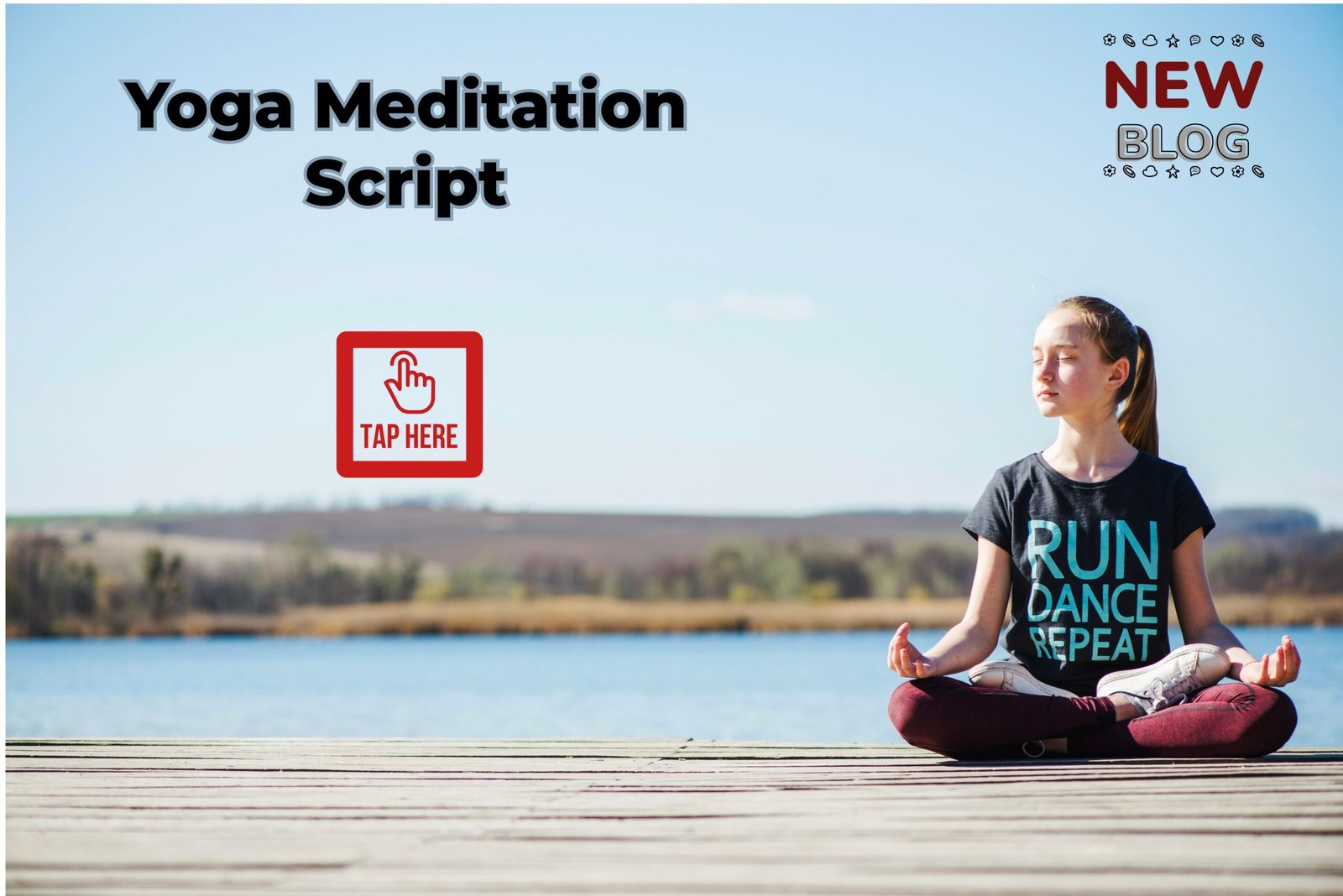Introduction
It might be difficult to find quiet times in the fast-paced world of today. Yoga meditation is a potent method for lowering stress, clearing your mind, and reestablishing your inner connection. Regardless of your level of experience, a well-organized yoga meditation script can be a useful tool for directing your practice. This post will go over what makes a good yoga meditation script, how to write one, and how using one can improve your practice.
What is a Yoga Meditation Script?
A written guide that walks you through a meditation practice is called a yoga meditation script. Yoga instructors can use it to lead a class, and practitioners can utilize it on their own. Typically, the script contains mindfulness prompts, breathing exercises, posture directions, and visualization exercises. The intention is to assist the practitioner in reaching a profoundly relaxed and hyper aware state.
The Importance of a Structured Script
A carefully written script guarantees that the meditation goes smoothly, freeing the practitioner to focus entirely on the experience without having to worry about what will happen next. It acts as a road map, directing the mind through various phases of contemplation, concentration, and relaxation. A script can be very useful for novices to help them stay focused on the practice and prevent their minds from straying.

Components of a Yoga Meditation Script
Introduction and Intention Setting:
Ask participants to choose a comfortable seated position before starting the meditation. As they close their eyes, encourage them to inhale deeply several times.
Explain what the meditation’s goal is yoga meditation script. This could be done in order to develop gratitude, mindfulness, inner serenity, or any other virtue.
Example: “Take a moment to set an aim for this meditation while you settle into your surroundings. What do you want to cultivate today within yourself?”
Guided Relaxation:
Guide the practitioners through a body scan while motivating them to let go of stress in various body areas.
Concentrate on softening the face, releasing any physical discomfort, and relaxing the muscles.
Example: “Lightly move your consciousness down your body, beginning at the top of your head. Take note of any tense spots and let them release with each breath out.”
Breath Awareness:
Help the practitioners concentrate on their breathing. Urge them to notice their breathing’s organic rhythm without attempting to regulate it.
Introduce breathing exercises like breathing through your nose, deep diaphragmatic breathing, or counting breaths.
As an illustration, “Bring awareness to your breath.” As you breathe in through your nose, feel the cool air, and as you release, feel the warmth. Allow your breathing to serve as an anchor that keeps you rooted in the here and now.”
Visualization:
Start the meditation with a visualization exercise to help it go deeper. This might be visualizing a serene setting, a healing light, or any other soothing imagery.
As an illustration, picture yourself in a calm garden. The aroma of flowers permeates the air, which is fresh. Experience the cooling effect of a light wind and the warmth of the sun on your skin.”
Mindfulness Prompts:
Assist the practitioners in objectively observing their feelings and ideas. Tell them to remain in the moment and accept whatever comes up during the meditation.
For instance yoga meditation script: “Just notice your ideas as they arise and pass by without getting attached. You don’t have to follow them or oppose them. Let every thought glide by like a cloud moving across the sky.”
Affirmations and Positive Intentions:
Add encouraging statements to the meditation to reaffirm its goal. You can say these aloud or silently again.
Example: “I feel at ease, in control, and at peace right now. I have a connection to my innate, limitless wisdom.”
Closing and Gratitude:
As the practitioners gently regain their consciousness to the physical space, conclude the meditation.
Urge them to thank you for the time they spent meditating and the knowledge they acquired.
Example: “Bring your attention back to your breathing as you start to come back to the here and now. When you’re ready, open your eyes carefully and wiggle your fingers and toes. Give thanks for this period of serenity and introspection to yourself.”
Tips for Writing Your Own Yoga Meditation Script
Keep It Simple: Steer clear of excessively complicated words or ideas. All skill levels of practitioners should be able to easily follow and understand the script.
Pay Attention to the Pace: Make sure there are breaks and quiet periods in the script. This allows practitioners to get more experience and assimilate lessons more fully.
Employ Descriptive Words: Use descriptive language and striking pictures to arouse the senses. This contributes to making meditation more engaging.
Put Your Preaching Into Practice: Go through the script on your own before utilizing it in a class or for personal practice. This will assist you in determining any places that require modification.

How a Yoga Meditation Script Enhances Your Practice
Your meditation practice might become more organized and focused by using a script. It offers a dependable structure that lets you gradually develop your practice. A script can also be a source of inspiration, offering fresh ideas and methods to enhance your meditation practice.
A well-written script guarantees that every yoga class has a clear goal and flows well. It facilitates the development of a secure and encouraging atmosphere where practitioners can unwind completely and delve into their inner selves.
Conclusion
A scripted yoga meditation is an invaluable resource for anybody seeking to enhance their meditation skills. Whether leading a group or practicing meditation by yourself, a script offers direction, inspiration, and structure. You may design a potent meditation session that encourages inner peace and self-awareness by adding components like breath awareness, visualization, and mindfulness prompts.
When you include these components into your own practice or lessons, you’ll notice a transformation in the quality and impact of your meditation sessions. Recall that patience, constancy, and an open heart are essential for a good meditation practice.
